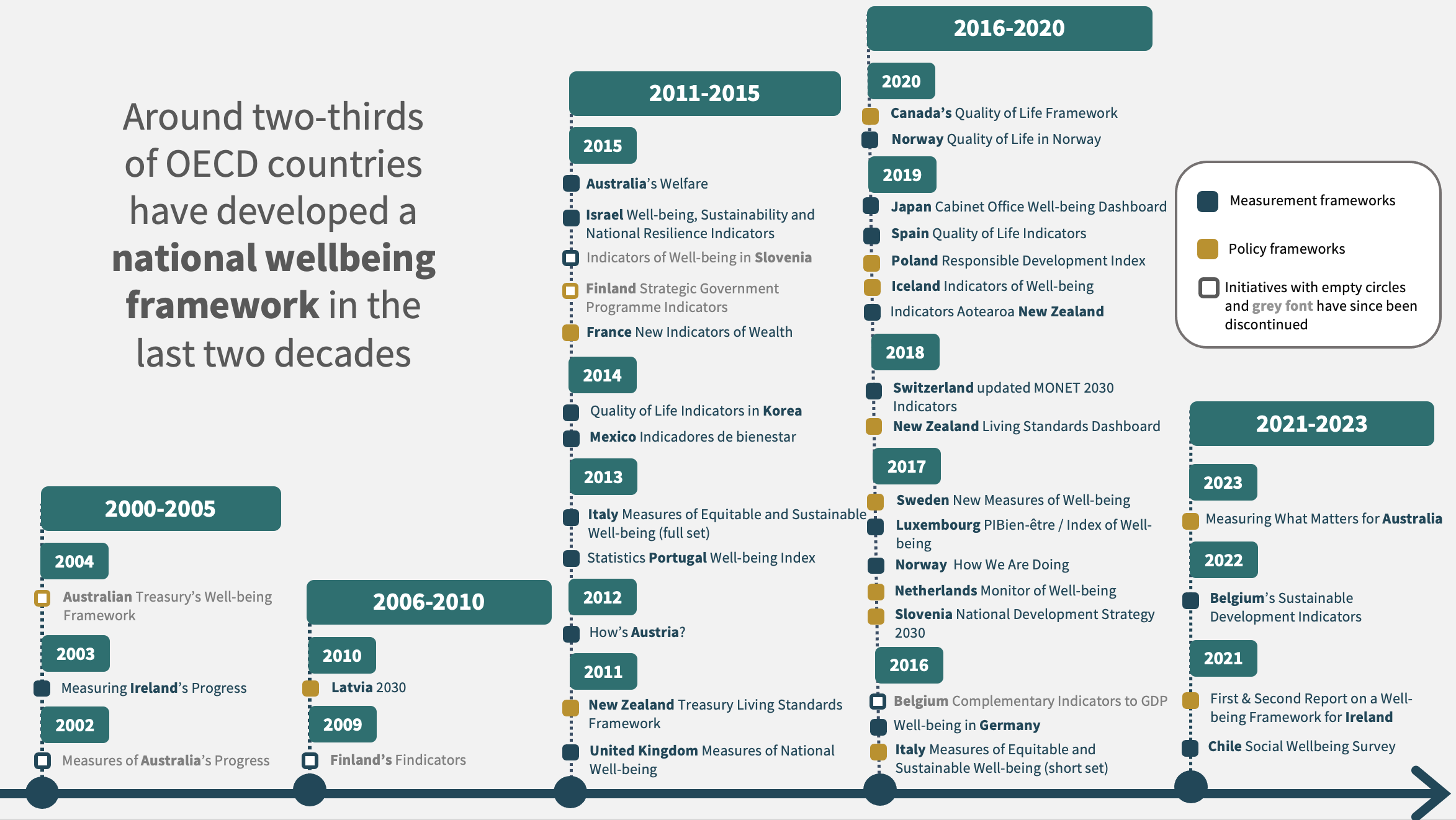“We need a paradigm shift in what we measure as progress, so that we can capture data on the activities and outcomes that societies truly value, and then use the data to better inform our policy and financial decisions.”
António Guterres, UN General Secretary, June 2023
Purposes of wellbeing measurement frameworks
To be able to monitor wellbeing in society and track progress against wellbeing goals, many governments use wellbeing measurement frameworks. Wellbeing measurement frameworks serve multiple purposes [1]:
They concretise a wellbeing vision, by specifying what good looks like for the desired wellbeing outcomes in the wellbeing vision
They can be used to monitor progress and to evaluate policy interventions
They can help identify areas of strength as well as areas of challenge
They can serve as a tool for public accountability, enabling people to gauge progress towards stated goals.
Over the last two decades, many international wellbeing measurement frameworks have been developed. Examples include the Sustainable Development Indicators, the OECD Well-being framework, the Human Development Index (HDI), the Genuine Progress Indicator (GPI), and many more. For a comprehensive overview of wellbeing and ‘beyond GDP’ dashboards and indicators that have been developed by countries and researchers around the world, have a look at the Beyond GDP website, hosted by Leiden University (the Netherlands).
At national and local levels, a growing number of governments have developed their own wellbeing measurement frameworks to guide their policy development [2].
While there are variations between the precise indicators included, there is broad overlap in the domains that are generally reflected in wellbeing measurement frameworks [3]. Nearly all wellbeing measurement frameworks resonate with the philosophy set out in the seminal 1987 Brundtland report Our Common Future, which defined sustainability as “meeting the needs of the present without compromising the ability of future generations to meet their own needs”. The Brundtland report identified three dimensions of societal success:
Current wellbeing
Inclusion or the distribution of wellbeing
Sustainability or future wellbeing
These three dimensions feature across wellbeing frameworks internationally.
Wellbeing framework development internationally.
Watch Lara Fleisher, Head of Unit, Well-being Data Insights and Policy Practice at the OECD WISE Centre, as she describes the development of wellbeing frameworks internationally over the last decades.
Case study
Click on the card to explore real-life examples of wellbeing frameworks developed by governments around the world.
References
[1] Abdallah, S., Laurence, R., Pickett, K., Hough-Stewart, L. Coscieme, L. (2024). Wellbeing Economy Ideas for Cities: Lessons for Implementation. Journal of City Climate Policy and Economy, 2 (2): 189-203, https://doi.org/10.3138/jccpe-2023-0018
[2] OECD (2023). Economic Policy Making to Pursue Economic Welfare: OECD Report for the G7 Finance Ministers and Central Bank Governors, May 2023, Japan, OECD, Paris.
[3] Zeidler, L. (2023). The Shared Ingredients for a Wellbeing Economy. Centre for Thriving Places, www.centreforthrivingplaces.org/wp-content/uploads/2023/02/Shared-Ingredients-for-a-Wellbeing-Economy-Paper_Publication-Copy.pdf
Image source
The development of country-level wellbeing measurement and policy frameworks: OECD (2023). Economic Policy Making to Pursue Economic Welfare: OECD Report for the G7 Finance Ministers and Central Bank Governors, May 2023, Japan, OECD, Paris, p. 18.



